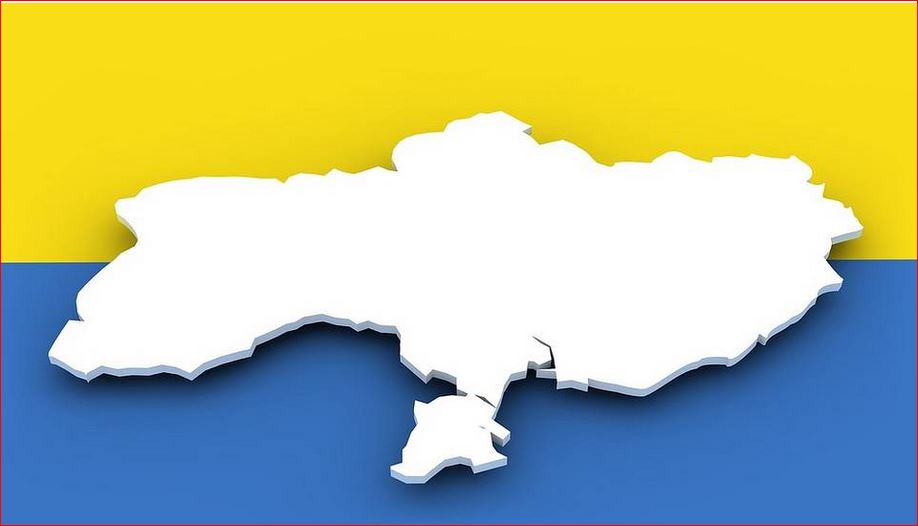

Photo Credit:Ukraine map
picryl pixabay cc1
Western hegemony is passing, but for reasons other than the war in Ukraine.
Alluding to her opponent Donald Trump, Vice President Kamala Harris recently criticized any compromise in the Ukraine war that might involve territorial concessions as a “surrender” policy.
Her position is within the consensus view on the Ukraine war. Former U.K. Prime Minister Boris Johnson frames the issue in even starker terms: “If Ukraine fails,” he has said, “It will be a turning point in history, the moment when the West finally loses its post-war hegemony.”
Apart from the gaucherie of European statesman lamenting the loss of dominance over others, Johnson is half right.
Western hegemony is passing, but for reasons other than the war in Ukraine. The war is accelerating trends already in place. But it is a “turning point” in the sense that the war’s origins are found in one kind of a world order while its end will come in a different kind.
By world order we mean the way in which power is distributed around the globe, who makes the rules, and its legitimacy, how countries play by the rules. The world order in the twentieth century saw a culling of great powers from several at the beginning of the period to only two by 1945. This was the bipolar world of the Cold War in which two camps were led by the United States and the Soviet Union.
When the Cold War ended, only one great power remained. This was America’s “unipolar moment,” a brief period when the U.S. faced no military equal.
Not only was the U.S. the world’s paramount power, it was also an ideological power, one with a messianic impulse. The tag word here is “liberal hegemony,” the strategy during this period when U.S. prioritized democratic values, open markets, and respect for individual rights.
European elites seconded the move and a trans-Atlantic consensus was forged on how world affairs should be organized. The goal was to bring about rules-based” international order, with the Americans and the Europeans making the rules.
Military force was part of it. U.S.-led coalitions toppled regimes in Afghanistan and Iraq, and then tried “nation building” to put those countries on a democratic path.
“Regime change” became statecraft. Sometimes this was done by force (Libya in 2011, and unsuccessfully in Syria after 2012), and sometimes behind the scenes, as in the 2014 Ukraine uprising that brought to power a stridently anti-Russian faction. The U.S. saw its use of force as the right thing to do; its mission was to nudge events onto the right side of history.
But the U.S. did these things not only because it saw them as right, but because it could do them.
No other power was on the scene to block its way. In a multi-polar system, the theory says, other major powers would act as counter-weights, curbing the hegemon’s aspirations. There was no such corrective on the scene during the unipolar moment.
The cause of the Russo-Ukraine war was the prospective admission of Ukraine into the NATO alliance. Russia said nyet; its protests went unheeded. Bringing Ukraine into the fold would be the culmination of a long process in which NATO expanded into the spaces of the old Soviet bloc. When the Soviet Union dissolved itself in 1990, there was no Western intent to expand NATO. That decision came later and it required a change in NATO’s mission. Originally a defensive alliance against the Soviet Union, NATO was now tasked to provide the security foundation on which Eastern Europe democracy could be built.
NATO became the military arm of a democratization program. New members were expected to perform a to-do list of domestic reforms necessary for membership.
Compare this to NATO’s early years.
Allies Portugal, Greece, and Turkey were authoritarian states, and West Germany’s admission in 1955 was made not because it had democratized, but to bring its resources into the anti-Soviet coalition.
Security, not democracy, was priority. Two different world orders shaped two different American strategies. When the U.S. faced a military peer, pragmatic considerations were on top, while democratic norms, although present, were secondary; but when the Soviet Union passed from the scene, America’s idealist impulses came forward. During the Cold War, NATO exercised restraint because it understood that its actions could be seen by the other side as threatening. In the unipolar world, restraint was replaced by the belief that the actions of liberal democracies are inherently non-threatening.
NATO enlargement was nested within a liberal internationalist outlook. It took some inspiration from democratic peace theory, which holds that a world filled with democracies would be a safer place because democracies do not go to war with each other. The assumption is that world peace comes from domestic political structures, provided they lean in a liberal direction, and not from a precarious balance among the great powers. Blame Russia for any tension over Ukraine’s admission. If it would only see Ukraine’s aspirations like the Eurocrats in Brussels see them, there would be no dispute at all.
But there is a darker rationale behind NATO expansion. Ukraine inside NATO would be a way of weakening and destabilizing Russia so as to bring Euro-minded reformers to power there. The end state would be to transform Russia into an appendage of the West, relegated permanently to second-tier status. This goal sometimes lapses into talk about breaking Russia up into smaller ethno-entities.
Russia read Western intentions that way and chose to go to war.
Even before the Ukraine war, America’s unipolar moment was passing. This is seen in the economic domain with the rise of new industrial powers in Asia and elsewhere. The economic sanctions imposed on Russia by the West has alarmed countries in the so-called Global South. They fear that they too could be the objects of economic isolation if they wind up on the wrong side of “Western values.” They are diversifying away from the West with new trade patterns and alternative payments systems.
A move to a world with multiple power centers would be a reversion to the norm after a century’s oscillation in which the number of great powers was reduced from several to two, then to one, and now back to several again. The historical pattern of countervailing forces appearing whenever one state becomes too powerful is reasserting itself. The world today is searching for a new board of directors.
The choice ahead
The end of American primacy comes to a fork in the road. One way points to a change in foreign policy outlook; the other to little or no change at all. On the first road, elites on both sides of the Atlantic would make the necessary adjustments for living in a world with multiple power centers. Democratic norms would still be in the policy mix, but secondary to the practical concerns of dealing with power equals.
Ideally, this adjustment should take a hard look at the downside of liberal internationalism. For years Russia had complained about NATO enlargement. Putting aside the merits of the complaint, the issues were political-military in nature and had to do with the location and types of advanced weapons systems in Eastern Europe, distance to the Russian border, and the like.
A dispute framed this way can be divided into sub-issues, which in turn can be isolated and treated separately, so that the overall relationship remains serviceable. A partial, but imperfect, compromise could be found. But NATO injected liberal values into the discourse: new members had the right to choose their military associations without outside interference, liberal democracies are non-threatening, etc. Russian “core values” were rooted in the tangibles of national security; Western “core values” came from an overlay of idealistic principles. Liberal values transformed the dispute into a struggle between good and evil, making compromise difficult and resolution elusive.
The second fork points to a reaction and a doubling-down on past practices, including a Western confrontation with Russia that stretches into the future. What Johnson meant by “if Ukraine fails,” is debatable, but whatever it is, it would not be merely a setback for the West. It would threaten the entire liberal world outlook, its assumptions about political life, and its claim to shape the new world order. Liberal internationalists cannot let it happen. They are the dominant political class on both sides of the Atlantic. They will never admit error.
What they will do is split the outmoded idea of “liberal hegemony” in two, jettisoning the hegemony part, because it is no longer doable, while keeping the assertive liberal outlook. They will continue to inject liberal norms into the system wherever they can. That is their default position. This would mean that a new multi-polar world will have little or no effect on the liberal internationalist outlook.
There is irony here. Liberal internationalism has a conceptual template similar to radical Islam’s. The jihadist divides the world into the House of Islam, where Muslim societies are expected to live in peace with each, and the House of War, where non-Muslim societies are expected to convert or to be subjugated by the sword if necessary. The liberal globalist divides the world into democracies, which are expected to live in peace with each other, and non-democracies, which are expected to convert or to be subject to the right kind of regime change if necessary.
A sign at the fork in the road says: “Forever Wars This Way.”
James Soriano is a retired Foreign Service Officer. He has previously written on the Ukraine war at The American Thinker.
Image: Pixabay, via Picryl // Pixabay License





